After years of fighting for autonomy from the NCAA, the Power Five conferences made their first major decision: to provide cost-of-attendance scholarships to student-athletes.
Sixty-four schools and 15 appointed student-athletes voted in favor of the measure, while Boston College Athletics cast the lone dissenting vote.
This measure, enacted last week, reverses a 1975 decision by the NCAA that authorized schools to only provide full grant-in-aid to student-athletes on full scholarship. This mandate meant athletic departments could pay only for tuition, room, board, and other necessary fees. A full-scholarship athlete’s additional cost-of-attendance, as defined by universities’ financial aid offices, consists of miscellaneous items—laundry, travel costs, toiletries, to name a few—and amounts to $1,000 to $5,000, depending on how each school calculates its figures.
Why, then, did BC stand alone? For starters, the school didn’t expect that it would. “We didn’t necessarily anticipate being the only one,” Director of Athletics Brad Bates said in an interview on Friday. “In hindsight, it’s worked out pretty well because it’s given us a platform to work out our rationale.”
That platform, however, led to massive outcry this past week aimed at Bates and the University for acting as misers. A school with a massive endowment in a major conference should have enough money to grant student-athletes a little more leeway, critics decried. Doesn’t this just look bad on the school’s part?
Schools have considerable difficulty divvying up money for all of their students, whether for financial aid, merit awards, or athletics. Despite having one of the country’s largest endowments, BC is no exception. It’s not always that easy for institutions to find the extra money to allow students to attend school.
But to say that the University is pitted against Jesuit values in voting down the measure, as many have done, is a simplistic way of looking at the issue. Many have cited this as an instance of the school not caring about giving scholarship support to students who desperately need it, and to call its leaders—to quote from several tweets I’ve gotten over the last week—a “core of laziness and incompetence” or giving off the “perception of arrogance and stinginess” comes off as overlooking the complexities of Bates’ arguments.
Let’s examine each of Brad Bates’ three core stated reasons for voting against the cost-of-attendance measure.
“It further differentiates student-athletes from the general student population,” Bates said in an interview on the Tim Brando Show Wednesday on Sirius XM Channel 91.
This argument seems outdated at this point, a point which host Tim Brando made quickly and one that Bates agreed to as well. The student-athlete has grown further separated from the rest of the student body—a partly understandable separation, given the amount of media scrutiny, intense practices, and travelling most student-athletes do.
And yet, Bates still brings up a good point. “Just because they are separate doesn’t mean we have to continue contributing to that separation,” Bates said in the interview.
Students coming to BC have a wealth of talents, many outside of athletics. I spoke with Bernie Pekala, BC’s director of Student Financial Strategies, who said that 51 percent of BC students will graduate with some form of debt, averaging $21,000 for the Class of 2013. And although scholarships exist for other activities, like the marching band or ROTC, their amounts pale in comparison to the hefty scholarships provided to student-athletes.
Believe me, I’m not trying to say that student-athletes don’t deserve scholarships. Many student-athletes do need significant financial aid, but like any other student, full scholarship student-athletes in dire need of having their full cost of attendance covered can apply for federal Pell Grants.
To have Pell Grants cover beyond full grant-in-aid—or the additional cost-of-attendance—the amount for a full-time undergraduate range from $5,730 in grant for a zero dollar calculated federal family contribution to the amount of $602 for a federal family contribution of $5,157, Pekala said. A student-athlete must be in serious financial need to receive this money, but the federal government will provide it if such need is demonstrated.
These Pell Grants do not count against the NCAA’s rules which require additional BC grants to count against the school’s athletic scholarship limits. According to associate athletic director for compliance Carly Pariseau, 50 student-athletes, or seven percent, received a Pell Grant this past year.
Student-athletes can also apply for money from the NCAA’s Student Assistance Fund (SAF). According to Pariseau, this fund is for “anything other than tuition fees, room/board, required books, and athletic-related things—so [BC] couldn’t use it to pay for private lessons or skill instruction.” CBS Minnesota’s David McCoy reported on the SAF last year, referencing student-athletes at the University of Minnesota: one who used it for travel to a funeral, and another who purchased a dress for the WNBA Draft.
But student-athletes aren’t the only ones who need help—many current BC students would never be capable of getting the kind of assistance student-athletes get from the SAF. And I think critics must be sensitive to that fact.
When BC non-athletes receive “full scholarships” from the school, through BC grants based on both financial or merit aid, those funds are capped at tuition. Non-athletes must demonstrate additional need and apply for loans or federal grants to cover room and board. This is an important contrast to the “full grant-in-aid” scholarships that student-athletes receive, which includes room and board.
It seems the argument, rather, should come as criticism of the way BC, not just the athletics department but the school as a whole, decides to calculate financial aid. And it’s fair to attack this artificial cap when other schools make accommodations to provide for full cost-of-attendance scholarships.
BC, however, makes a valiant effort to give as much money as possible to as many students as possible. This strategy, while denying full cost-of-attendance to the most needy, spreads the aid around and allows some students to at least have a shot of coming up with the money to attend the school. For that reason, BC’s strategy, while different from other schools, has its merits.
Bates also argued against “continuing to pass legislation that increases expenses when the vast majority of athletic departments are already subsidized by their university.”
Yes, BC has this generous endowment. But it doesn’t mean that it, and other athletic departments, have all the money in the world. SB Nation compiled a list of all of the public institutions—private schools can choose not to release financial data—finding that only 20 of 230 Division I institutions turned a profit in 2013, with many reporting huge losses.
With a lot of red on the books, many schools turn instead to cutting programs—take, for example, the University of Alabama-Birmingham, which shut down its football program this year—and nothing good comes for student-athletes if they lose their sports. Criticizing BC Athletics for excessive spending practices in the past, however, makes sense. If BC can make the incredibly costly decision to continue paying large salaries to fired employees, do we believe that they’re too strapped for University funding for full scholarship athletes?
His third argument relates to the possibility of teams exploiting the measure. “The federal financial aid formula is sufficiently ambiguous that adjustments for recruiting advantage will take place,” Bates said in the radio interview. He is pointing to the great disparity between the way schools calculate what constitutes as cost-of-attendance. These figures range from as little as $1,000 to $6,000. Given that BC’s cost-of-attendance is on the lower end, in comparison with other schools at least, the advantage BC gets is not too big. Schools like Virginia Tech, however, serve to gain a great advantage from this—the school can offer an extra $5,480.
Bates claims he has the support of both the student-athletes and coaches. He said last week that he spoke to only one coach—Steve Addazio—about the measure, and Addazio “completely supported what [BC is] doing and why [the school] supported it.”
In addition, Bates claims that the student-athlete advisory committee (SAAC) “supported our no-vote.” SAAC, according to the program’s website, links “student-athlete concerns with the BC administration” and “provides vital input on student-athlete support services,” has representatives all across BC Athletics, and is headed by Collin Fedor, a member of the track and field team and A&S ’15.
If SAAC, which takes input not just from its 15 members, but also has open forums with all student-athletes, supports the decision, it’s hard to fault Bates for feeling confident about his vote.
Let’s take a quick step back here, however, and look at this from a business perspective rather than a logistical one.
Thinking in this light, BC made a foolish decision.
Singling the department out will add significant ammo for schools competing with BC for recruits, such as UMass, Connecticut, or any other ACC school. Bates told me that no recruits have pulled out, nor that he finds it to be a major concern. But with half of the men’s basketball team graduating and the football team’s stock rising and needing better recruits more than ever, BC needs any recruiting advantage it can get. Voting against cost-of-attendance doesn’t help.
In addition, BC now plays in a major conference, but the way the school spends on athletics makes it seem like BC longs to return to the Big East. Those days are over. BC cannot continue to deny its student-athletes sufficient facilities—for example, the lack of an outdoor track or a working soccer field. To remain competitive in a major conference, BC must spend and prioritize certain functions of athletic departments in the way other ACC schools do.
Talks of paying college athletes, stemming from the O’Bannon vs. NCAA case and the Northwestern unionization movement, should scare athletic departments more than they let on. Considering the massive amounts of revenue and publicity schools get from athletics, often exploiting student-athletes (see: the NCAA selling jerseys’ of players on its own website), the schools are fighting a losing battle. Providing cost-of-attendance will quell the anger.
And despite attempts to hold true to the school’s initial stance and Bates’ claims to have not expected to be going into this decision alone, the fact is that this measure was widely known to pass fairly easily. It seems as if BC went out of its way to make a point, and that, therefore, invites this negative criticism.
Ultimately, BC has chosen to act in favor of cost-of-attendance scholarships, complying with the measure, according to a report by ESPN’s Andrea Adelson.
I don’t believe BC athletics made the right call—much of their actions come across as hypocritical, given some of the spending decisions by the department, and I believe the school hurt its recruitment appeal far more than Bates believes. In addition, athletic departments should provide whatever means necessary to give benefits to student-athletes that will prevent them from unionizing. I don’t believe student-athletes should get paid directly from schools—however, considering the exploitation of free labor of student-athletes, individually pursued endorsements or other outside payments shouldn’t be out of the question.
That being said, I think we must look at the rationale of the department before we vilify BC and Bates, and their decisions become far more understandable when looking at Bates’ reasons. It doesn’t make them right or the strongest reasons, but it has basis from thought-out planning.
The situation BC falls in reminds me of the sports world’s current controversy: the New England Patriots and #DeflateGate. This is simply a media circus about a non-story—no matter what anyone says, the Patriots will still be heading to Glendale for the Super Bowl next Sunday. Considering BC, as well, will pay these cost-of-attendance scholarships, a lot of the reaction to this story is merely overreaction. And perhaps that response is more telling than the decision itself.
Featured Image by Graham Beck / Heights Senior Staff

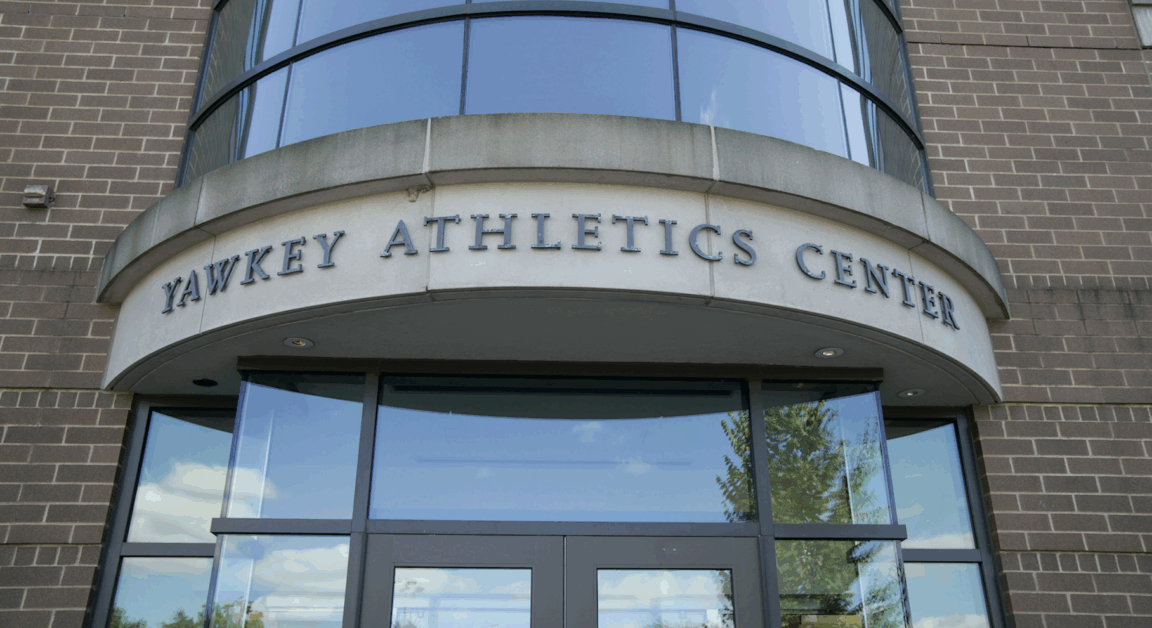

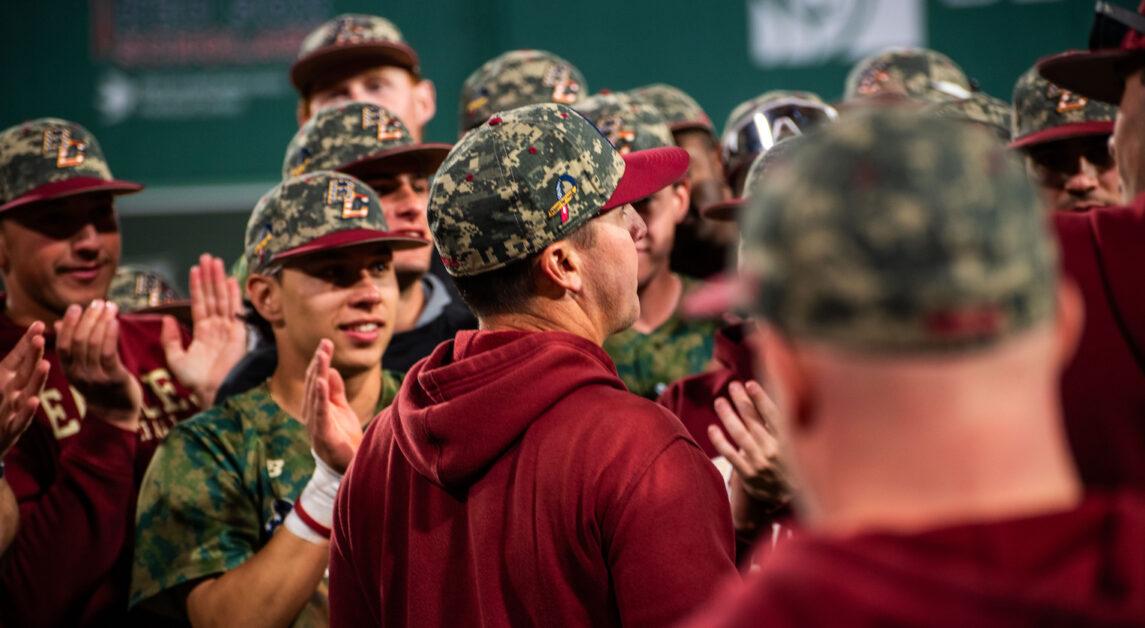
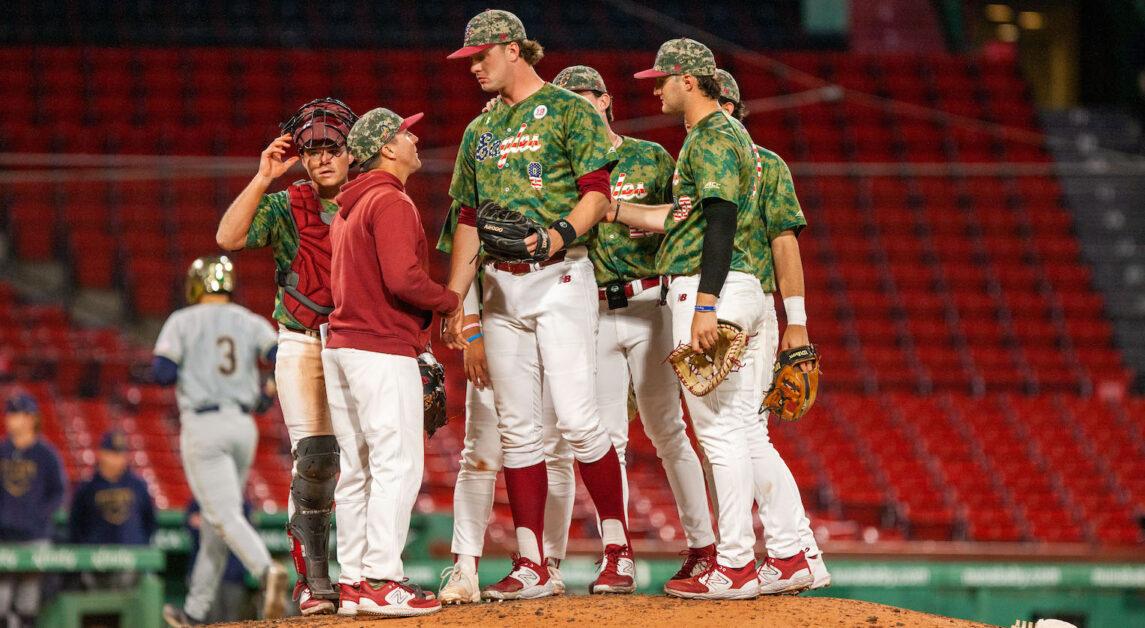


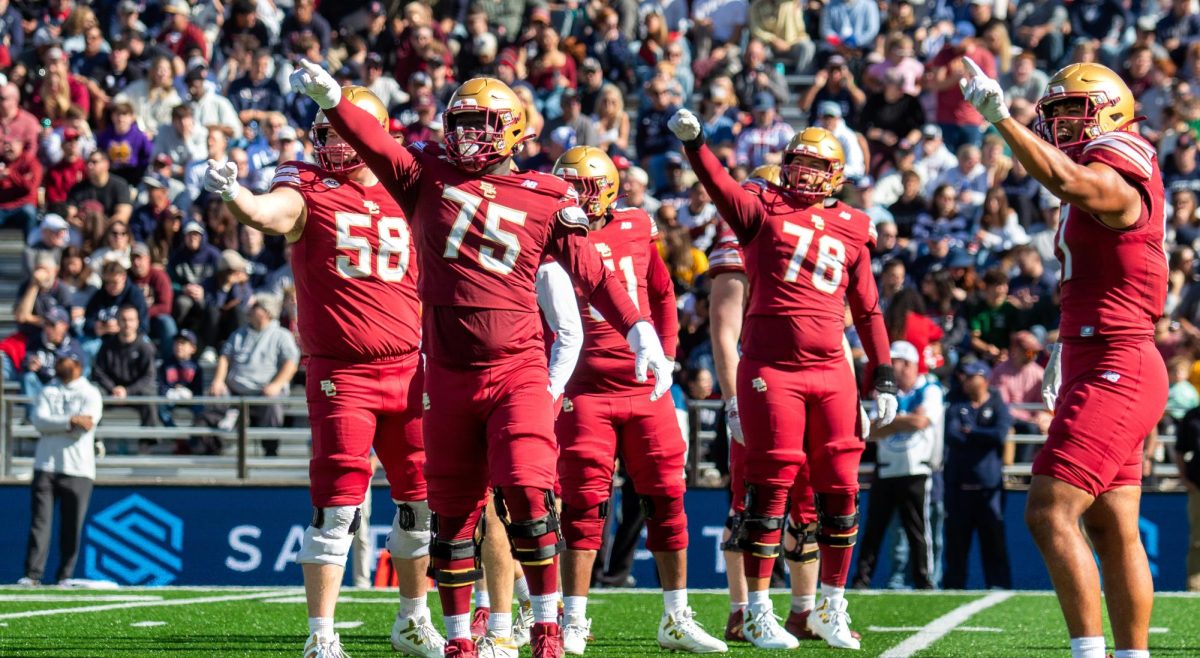




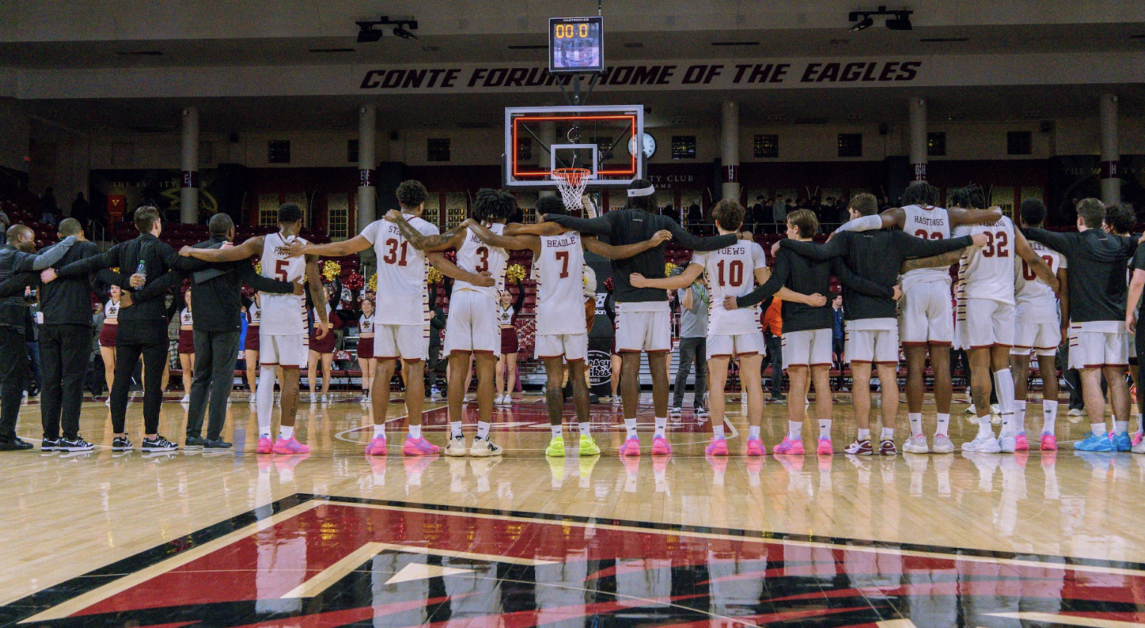






Stephen J. Salerno • Jan 26, 2015 at 12:54 pm
Yeah, those were mostly my tweets and I respect your column and views but:
BC just showing its true colors, feelings and our Athletic Department incompetence about poor athletes, mostly black. BC is in Chestnut Hill, a tony white and one of the most super expensive hoods in the world, and NOT giving poorer athletes spending cash for food & other expenses, is the true BC in its most arrogant, insolent disrespectful state that I have been
posting about for 12 years.
BC for 12+ years has refused to build even an indoor facility for a huge sleeve of NCAA Sports. BC has a huge endowment of $2.9B+ and 55 magnificent Brighton acres and our
stadium and arena are obsolete & in need of renovations. Our women’s #1
rated Hockey team has to use outside workout facilities?
For Brad Bates to go along, clearly illustrates he is Power 5 conference incompetent, since the
perception of reality is reality today and how can Jim Christian or Steve
Adazzio look some poor black kid in the eye and say, “BC cares about you
and your family?”
Good luck recruiting with that perception of loser cheapness and cloud of arrogance after a Power 5 equal or better academic school comes into the kid’s & parents kitchen right after Jim or Dazzler and says, “BC voted against spending money for your poor kid or even middle class kid?”
Bates wants to play with the big boys, he better understand this is not the MAC, this is the bg leagues and kids want cash like the other Power 79 schools & BC is LOADED!
What an absolute disgrace my Alma Mater has become and one can only hope some, (MIA for
decades), power alum steps up and removes the President of the Board of
Trustees and our University President.
One should see the video of the poor kid who used his football bowl gift card to finally buy his
Mom a Christmas present and the tears of joy on his face. BC line about our
education being better or equal to other peer Power 5 schools like Stanford,
ND, Duke, Northwestern and ergo, no stipend needed, is utter LAZINESS.